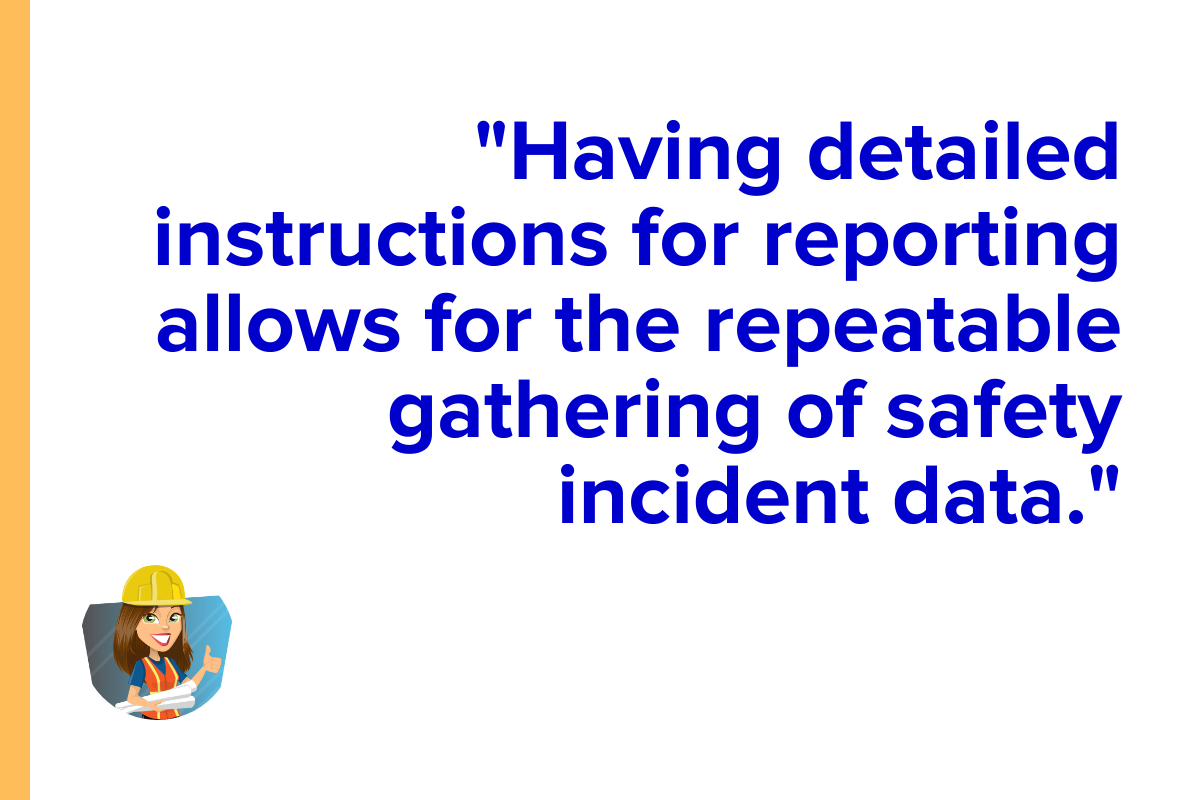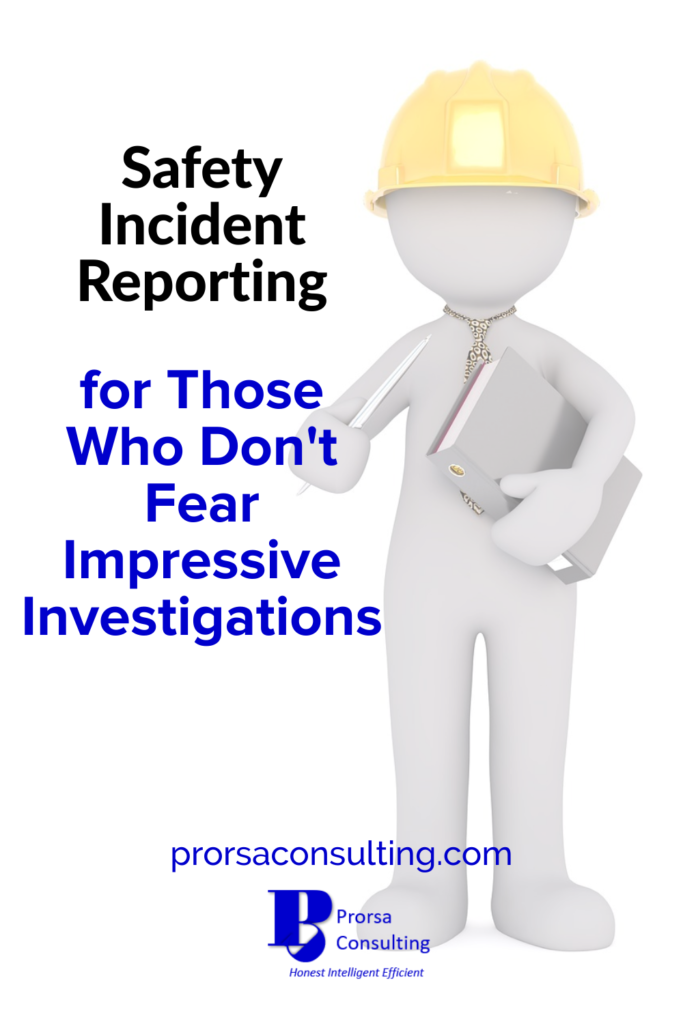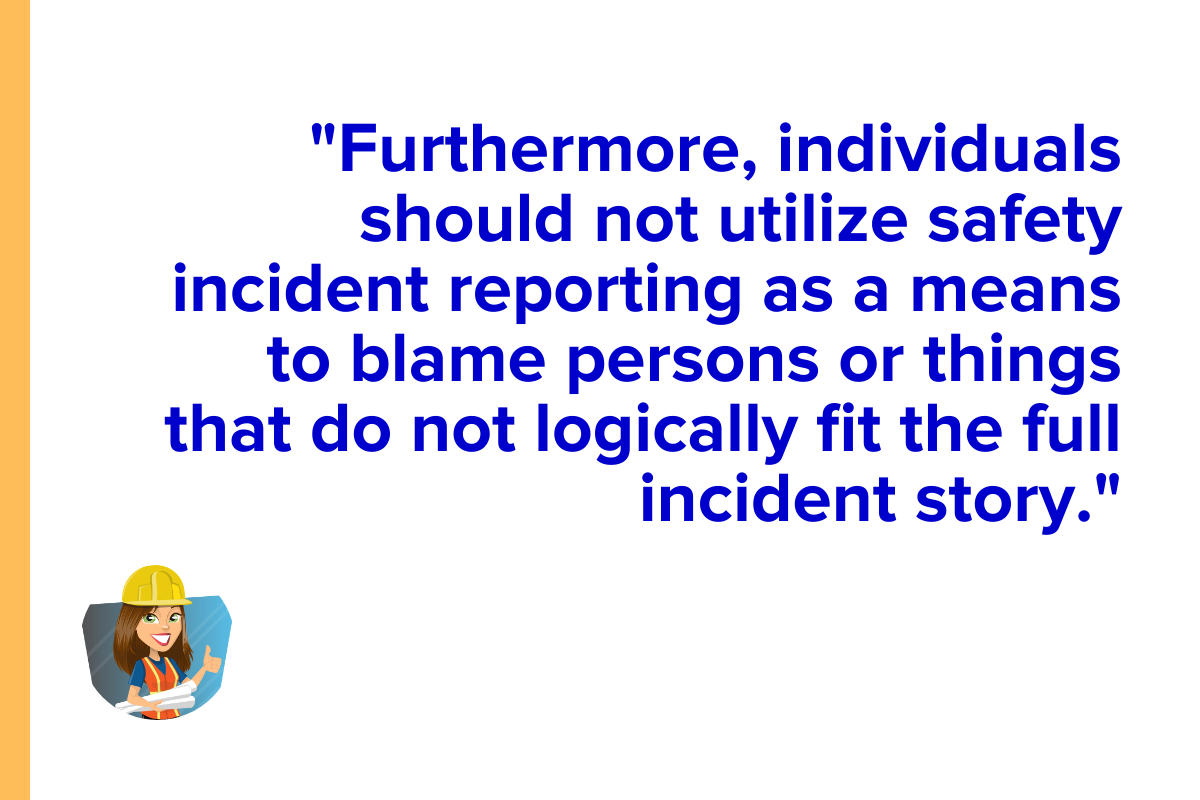Safety Incident Reporting for Those Who Don’t Fear Impressive Investigations
By : Admin -
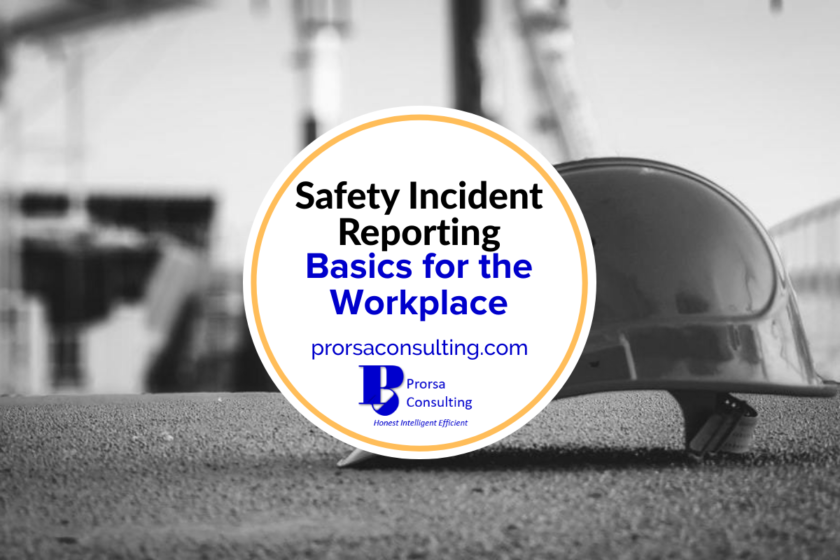
Excellent incident investigation begins with robust safety incident reporting.
Why? You cannot arrive at meaningful investigative results without the initial details from your safety incident reporting to prompt proper fact-finding.
Imagine yourself calling the police to report a break-in you are witnessing. However, you cannot provide 9-1-1 with the address, description of the perpetrators, or the make and model of the car used. How effective do you believe the police would be in this instance?
Reporting should be high on the list of priorities after circumstances no longer pose a danger to life or property. The information collected will help guide the subsequent investigative steps, hopefully leading to better safeguards for workers and property.
So, keep reading below to uncover items to include in your company’s safety incident reporting procedure to ensure the collection of correct, value-added data.
Safety Incident Reporting: The Overall Strategy
Safety incident reports serve to record and preserve information for future review and evaluation.
Likewise, written reports serve as the best way to collect and communicate data for assessment. The further any person gets away from an event, the more memories of that event fade, potentially losing small, vital details in the process. So, by portraying the who, what, when, where, and how surrounding an occurrence, safety incident reports can reduce confusion and omissions that come with time.
Oral reports may serve as an excellent means of immediate notification. However, they do not create the same record authored reports do. Consequently, reporting in a written format can serve as a notification device, as well, and may offer a more in-depth relay of the circumstances around the event.
A comprehensive incident reporting procedure can provide a systematic mechanism to support complete, accurate, and efficient reporting.
Additionally, having detailed instructions for reporting allows for the repeatable gathering of safety incident data. This guidance should inform users of the requirements of when safety incident reporting should occur. Moreover, it must concisely outline the steps to take to report properly.
The procedure should also reference emergency action procedures for instances when incidents coincide with emergencies. Likewise, the guidelines should provide a standard format for the safety incident report. Implementing a standardized reporting form removes the guesswork for reporters and aids investigators by providing familiarity.
Safety Incident Reporting: The When and Where
Documenting the when and where an incident occurs puts the event and its subsequent reporting in context.
Humans have used place and time throughout human history to log events. For example, what if I were to relay to you that a volcano erupted. Yet, that does not tell you much. Numerous active volcanoes in the world have blown throughout history.
However, let us say I add a location and time to my report by telling you the volcano erupted in Italy in 79 AD. Now you have enough information to identify Mount Vesuvius as the culprit. Thus, the where and when made all the difference in the identification.
Recording the where and when may require more than two entries on the safety incident reporting form.
In the example above, the where and when information was straightforward. Yet, complete identification of the where and when for a safety incident may entail multiple locations and times.
Any unexpected outcome can have lots of influencing items. Equipment, materials, or people coming from separate areas of the facility at various times could culminate in the documented event.
As such, your incident reporting procedure should ask for any pertinent information about where and when the event takes place. Additionally, the report form should be flexible enough to document multiple times and locations as needed. You can facilitate this flexibility by providing an entry space for a narrative description of events with instruction to utilize this space for additional listing of locations and times.
Safety Incident Reporting: The What and How
Capturing what happened acts as the main narrative of the incident’s story.
Think about the last time a friend or family member called you with news of an unexpected event. The first question you asked was probably, “What happened?” followed by “How?” Well, that sentiment stays the same when an incident occurs. So, the “what” and “how” tend to be the most critical pieces of information is safety incident reporting.
When collecting data on what occurred during a safety incident, it is paramount that the facts about what happened and how it occurred get documented. This record should include the actions leading up to, during, and after the event. Likewise, companies should design the narrative sections of the safety incident reporting form for this purpose.
Furthermore, reporters should avoid opinions and judgments when recording the narrative. Consequently, investigators will need unbiased information to determine the actual causes of the event to determine future preventative solutions.
A robust safety incident report will include answers to several what and how questions.
While asking “What happened and how?” can be a great starting place, more detailed questions will provide better information. Going back to my previous volcano example, my answer to what happened could be one sentence . . . A volcano erupted. However, far more data will need collection for adequate safety reporting.
So, ask questions like the following on your safety incident reporting form:
- What task was being performed?
- Which equipment was being used?
- What tools were being utilized?
- How were any tools or equipment operating at the time of the incident?
- What were the conditions present at the worksite?
- How were any standard operating procedures implemented (i.e., were there any deviations from the policies or work instructions)?
- What were the actions being taken just before the incident?
- Which was the PPE used?
- What, if any, body parts were injured?
Safety Incident Reporting: The Who
People are at the center of safety incident reporting.
An organization’s safety compliance program exists to make the workplace safer for all who enter. Therefore, safety incident reports cannot ignore those involved in incidents. Identifying the persons associated with the incident helps indicate who may need follow-up post-response check-ins, training, and disciplinary action, should circumstances warrant.
Nevertheless, organizations must keep in mind that individuals do make honest mistakes. The fear of retaliation for minor offenses can kill any reporting initiative before it starts. Thus, businesses must create a culture that makes safety incident reporting a positive measure of success rather than a negative measure of failure.
Safety incident reports must be flexible enough to accommodate more than one person per incident.
Organizations may want all their incidents to fall into the near miss category and involve only one individual, but in reality, that scenario will not always be the case. Safety occurrences come in all shapes and sizes and may affect only one person or a large group of people.
With this in mind, your reporting procedure and form must plan ahead for the possibility of multiple persons’ involvement in a single incident. Adding entry spaces for additional involved individuals could serve as a remedy. Moreover, providing procedural instructions that every affected person complete a narrative description of the event may prove vital during the future investigation.

Image by Nopphon at stock.adobe.com.
Safety Incident Reporting: The Why
Providing a suspected cause for an incident, i.e., the “why”, can help investigators focus their efforts more efficiently.
Having incident reporters state a probable initial cause of the documented event will assist in eliminating infeasible reasons behind the event. Let us take, for example, an event culminating in an uncrewed vehicle rolling into a barrier.
In this case, the reporter points to “operator error” as the suspected cause of the event. Within the report’s narrative description, the individual wrote that the pre-operational inspection of the vehicle found no apparent issues. Additionally, the narrative detailed that upon arriving back at the vehicle after parking and briefly entering a building, the involved individual saw the vehicle against the barrier with the gear in reverse and the parking brake unengaged.
Under this scenario, would it be logical for investigators to spend time proving a parking brake failure as the cause of the incident? Of course, not. The involved party indicated an unengaged parking brake found at the time of the incident. If the brake were not in use, it could not have failed. Thus, the reporter gave investigators an established place to start, so spiraling down the rabbit hole of infeasibility only wastes time and effort.
Preliminary suspected causes should consider the complete picture of the facts presented through the safety reporting of the incident.
Reporters must hold to the same standards as investigators. Thus, the suspected causes determined by those who report cannot be infeasible or nonsensical. Furthermore, individuals should not utilize safety incident reporting as a means to blame persons or things that do not logically fit the full incident story.
Let us revisit the vehicle rolling into a barrier example above. But this time, the report gives “poor lighting” as the suspected cause of the incident. In this instance, none of the details provided in the incident report would make poor lighting a reasonable suspected cause.
Those completing safety incident reporting must receive training to identify the suspected causes properly on their reports. Likewise, the training should emphasize examining the full facts in context to make an educated guess at the plausible reasons for the incident.
Other Workplace Safety Posts to Further Your Knowledge
Safety Key Performance Indicators to Guide Your Improvement Efforts
Dear Noncompliance: Meet the Quick 16 Safety Walkthrough Inspection
Performing a Job Hazard Analysis: Your Powerful Weapon to Prevent Workplace Injuries
Never Conduct Your Safety Incident Investigation without This Timeless Roadmap
Concluding Thoughts
No robust EHS investigation program can exist without sound safety incident reporting. Detailed information surrounding an incident enables proper event classification and analysis. This leads to successful measures to prevent a recurrence.
Having a reporting procedure and standardized forms can assist companies in making their safety reporting process repeatable. Additionally, ensuring safety incident reports capture the where, when, who, how, and why will bolster the value and usefulness these documents provide to investigators.
We encourage your feedback on this blog. Be sure to like, comment, and share below if you enjoyed the content. You can also provide feedback via our Contact Us page.
Do not forget to follow Prorsa Consulting on LinkedIn, Pinterest, and Twitter.
Prorsa Consulting collaborates with regulated companies to assess, maintain, and improve environmental and safety compliance to lower business risk. Schedule a discovery call today to start down the path to better compliance.
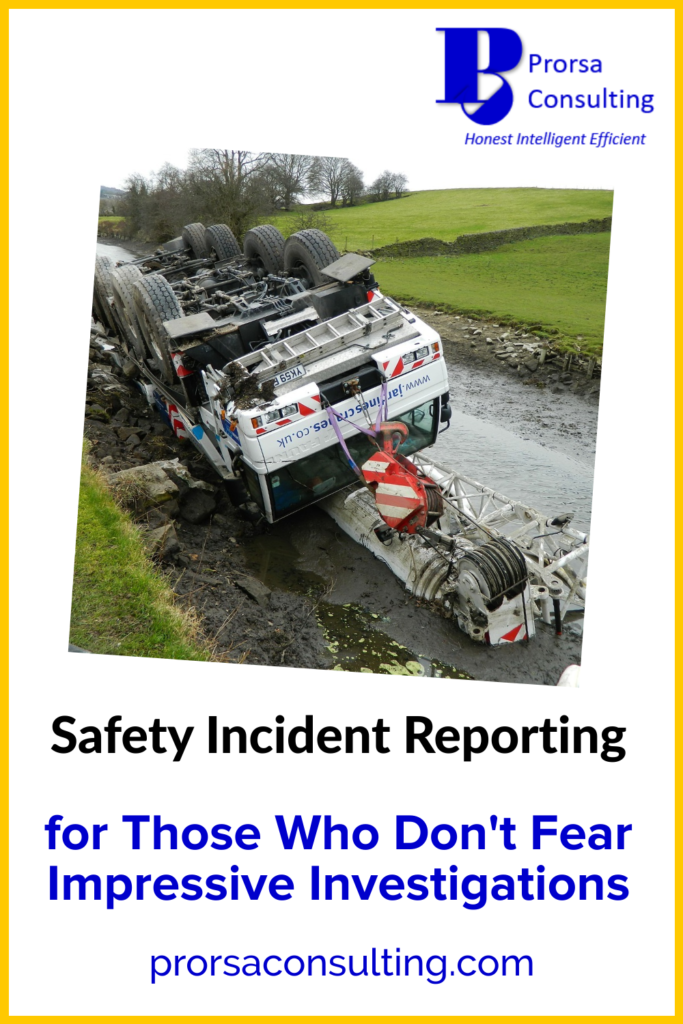
How would you like to have access to additional, exclusive EHS updates & info from Prorsa Consulting? Just signup for the Prorsa Consulting Newsletter below. You will get access to our Free Resources area and all the tools, templates, and presentations in the library. Get your free subscription today!


